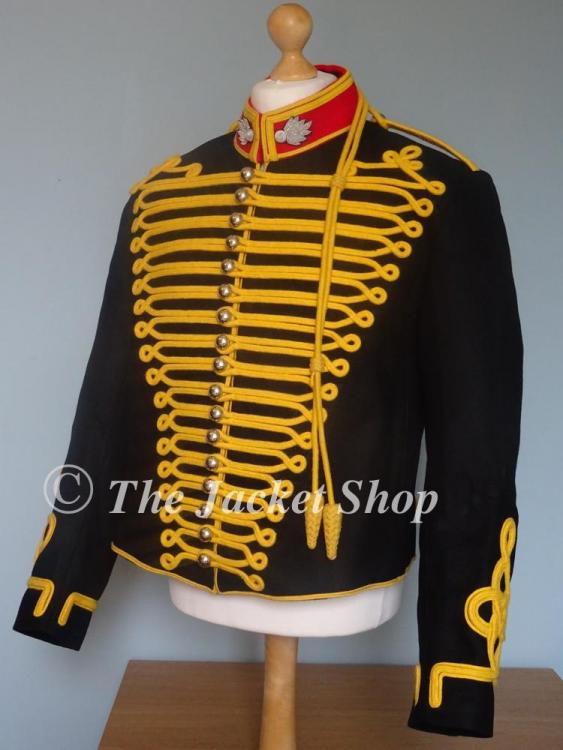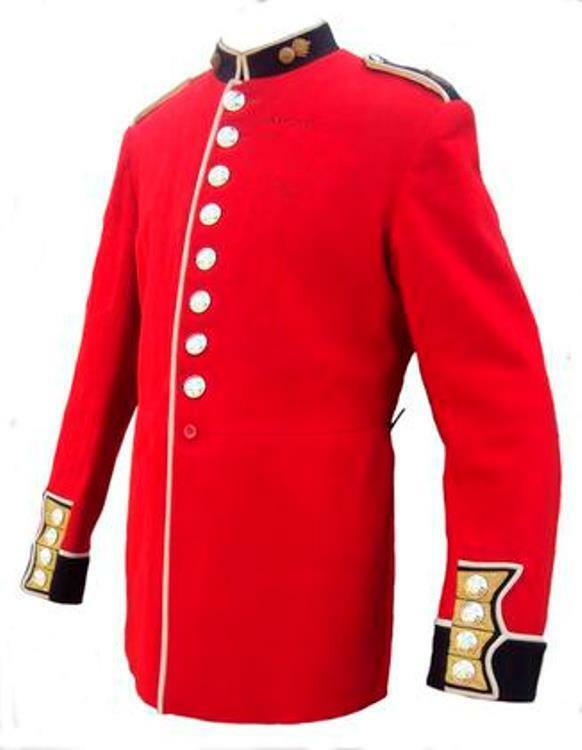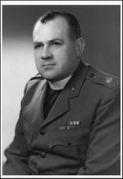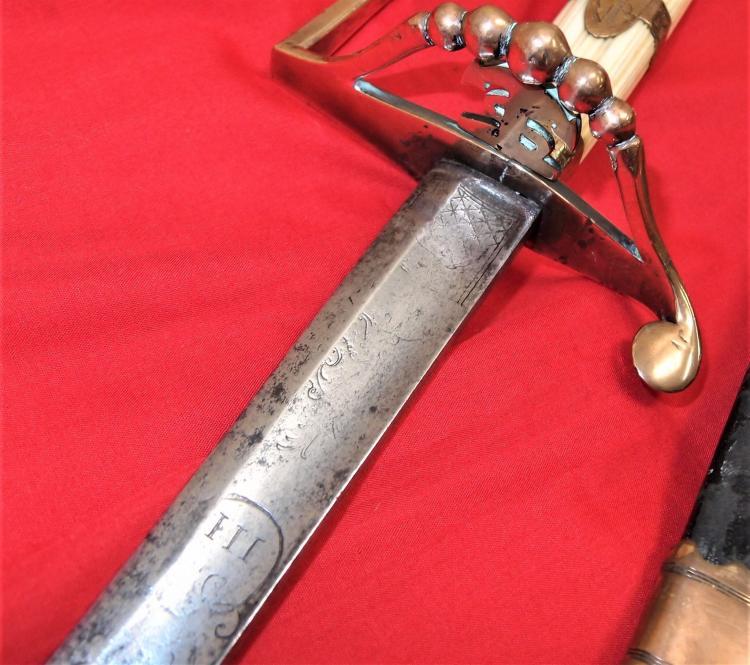-
Posts
4,862 -
Joined
-
Last visited
-
Days Won
15
Content Type
Profiles
Forums
Blogs
Gallery
Events
Store
Posts posted by peter monahan
-
-
Here is some general information to, perhaps, steer you in the right direction: http://www.greatwar.co.uk/medals/british-ww1-medal-records.htm
The War Office/National Archives records, however, are organized individually, by name, serial number and unit. I'm not sure about UK records but the Canadian equivalent are not listed by regiment, nor is there a handy index of numbers to units. Any such work I am aware of [in Canada] is the result of years of painstaking work by individual collectors and researchers, usually done by combing through ALL of the London Gazette entries for the relevant decorations and periods.

But perhaps the situation is better 'over 'ome'.
Just found this on a British site:
"
Naval & Military Press have sent me the following:
"Citations of the Distinguished Conduct Medal 1914-1920 - This much-needed series lists the full citations of the Distinguished Conduct Medal (and second and third award bars) in the Great War. The DCM may not have the cachet of the VC, but the deeds told in the citations for the award are just as heroic and inspiring.
The citations for DCMs are hard to find - unit histories often have no space for more than a brief mention, or just the bare fact of the award tucked away in an appendix. Others are lost in the labyrinth of small print in the official "London Gazette". But, thanks to the research of Rob Walker, who compiled the citations, and the tireless work of Chris Buckland who oversaw the mammoth task of typing of all 25,000+ citations, the brave deeds which won the medals are here for all to see.
It is, for my budget anyway, quite pricey at (RRP £225), but their current "Offer" price is £125.
I hope this information is of interest."
I would imagine such a mammoth work would include some indecises which might include what you seek. Good luck!
0 -
Thank you, Megan! Most helpful. I hope all is well with you.
0 -
I'm afraid the only information I can add is negative in nature. Several decades ago, when I still collected medals, I was told that collectors would write the appropriate office in London - The Chancellery, I assume - asking about 'the [fill in order here] numbered XXX' and in due course someone would respond that the decoration /order had been awarded to '' [Mr/Mrs/Lord A___________' in year 'ZZZZ'. All very helpful.
Then, as the story goes, there a new chap took over as head of the office, and the next such request was met with "We don't divulge that information and, byt the way, that award should have been returned to us on the death of the recipient. Please return it to us now!' And that rather put a lid of further enquiries.
 0
0 -
Interesting. I suppose, given that most 'Occifer' kit was private purchase, that almost any variation is conceivable.
0 -
Perhaps oddly, given the north of England knife trade, many of the British Army's swords and bayonets were made on contract in Germany. In fact, there was a considerable scandal during the 1880s expedition against the 'Mad Mahdi' when it turned out that case hardened, as opposed to tempered, bayonets were actually bending when used as intended because they were of inferior manufacture.
The word on the tang is 'Solingen', though apparently misspelled. Perhaps deliberately, if this was a cheap knock-off and trading on that almost legendary source of good German steel. The rest of the markings strike this non-expert as odd as well: the blade is hilted as a trooper's sword but I would not have thought such blades would have had any decorative etching, unlike those meant for officers.
Combined with the different blade length, I'm going to suggest that these points add up to: a copy, possibly of some age, rather than a genuine 1796 trooper's sabre. But there are others in the group - I'm thinking of Brian Wolfe in particular- who certainly have more knowledge than I and may have other ideas.
0 -
The conversion is important, as it implies a lengthy period of service. On later firearms - late 19th, 20th century, it is not uncommon to find anywhere up to a half dozen marks or sets of marks, resulting from the same weapon having been issued to multiple owners in multiple units. So, for example, a Victorian era carbine might have multiple marks and rack numbers indicating the times it had been issued to and inspected for a line regiment, plus marks showing service with militia or cadet units.
A long answer to a short question! Yes, the marks may have been put on the piece at different times.
 0
0 -
Bernie
There is just enough glare off the photo that I wasn't sure of the 'W' [old eyes]. Sadly, that doesn't get us an forrader! Can't think of any likely regimental title in English which would contain two words beginning with G and W.
 0
0 -
19 hours ago, Noor said:
Thanks Peter! Too much puzzle to me so I decided to move it in instead...
 But I understand and would probably do the same in your shoes.
0
But I understand and would probably do the same in your shoes.
0 -
Guessing, but the '50' is most probably a 'rack number' - the individual identification number specific to this pistol. The link below is to a New Land with a '57' on the butt plate just below '2 Husar R', which clearly a rack number.
The 'I' at the top may be a '1' and indicate troop or squadron, perhaps.
Are the letters/symbols at the 9:00 and 3:00 positions 'G' and 'W'?
0 -
An Irish priest born in Lorraine certainly sounds like a likely candidate to be rewarded for 'promoting Franco_Irish amity' or some such. A nice puzzle!
0 -
On 12/05/2019 at 23:44, Bayern said:
The recipe was given to me years ago by a tanner , to prevent the action of insects or fungus ,is convenient to add to the mixture some boric acid . five grains for each egg yolk .
Good to know. Thank you! I have just enough training in museum conservation to be a little suspicious of 'home recipes' but one would assume that a tanner would know.
 0
0 -
Duncan
Were you able to find what you needed? I didn't pitch in because I know of no UK sources but am curious, as Indian medals are an interest of mine.
0 -
My pleasure.
Yes, the fact that name combinations - identical first and last or even first, middle, and last shared is a major obstacle to research. I did a book on 70 men whose names are recorded on the WWI memorials in my area. About half are a surname and first initial only and in at least two cases I had to go with 'this is probably Private...' because of cousins, uncles and nephews or in one case completely unrelated men with the same three names.
 0
0 -
Beautiful. And in a good place now!
Peter
0 -
Noor
This one is an oddity. First, as far as I can tell from looking at numerous examples on line - Ebay and various numismatic dealers, it is not meant to have a suspender or ribbon. It seems to be what the French call a 'jeton' , which translates [roughly] as a 'token' or what I've seen described as a 'table-top medal'. That is, meant for display in its box on the mantelpiece or wherever.
There were a large number of such awards given out by various French government ministries in the 19th and early 20th century, including for Labour, the arts, and so on. It's just possible this of is from the Ministry of Labour and so might be for union work, an international conference or...? But not at all sure of that. My French is pretty awful and I'm still looking for a site that actually describes them, not just sells them.

The official title seems to be "France, Médaille, La Renommée proclame le Mérite", which phrase translates as 'the name proclaims the merit' - not much help! - and it came in silver as well as bronze.
Peter
0 -
Duncan
Not my field at all, but I see that no one else has responded. A quick look at the Wiki entry for this award indicates that it is in the personal gift of Her Majesty and several footnotes, which I did NOT check, reference the London Gazette, so my guess is that awards appear there and have not/are not listed in a publicly available medal roll. But that is strictly a guess, based on a very general knowledge of British honours and awards [and how hard they can be to research]. However, the Gazette is available on line, so a search of the period during which the letter was sent might turn something up.
However, the organization still exists, as the Royal Voluntary Service, who can be contacted here: https://www.royalvoluntaryservice.org.uk/contact-us. Presumably someone in their upper ecehelons could answer your query. Good luck with the hunt!
Peter
0 -
I think these are both made up for theatricals or costuming.

The braid on the top one is the wrong colour and weave to be British Army cavalry or Horse Artillery. The flat buttons with the POW feathers are wrong and may not even be military and the point-up chevrons on the right sleeve are not a British device.
The second one looks to be a copy of a late 1800s - Zulu War era? - infantry tunic but the colour of the collar is wrong and it looks far too flimsy to be an issue uniform. Also wrong buttons.
Below are examples of an RHA tunic and one from the Grenadier Guards, both modelled from the period these two are meant to represent.
0 -
9 hours ago, Bayern said:
Hello , Beewax is used today by the Blues and Royals for their parade boots in the inside ... personally i used for old and very dry leather items a the following a mixture of egg yolk and olive oil ...
I would be worried that such a mixture might attract insects, as it is 'edible', leading to damage over time. Is this your own recipe or is it recommended by restorers and curators?
0 -
Oh, well done, Paul! "Probationary Jemadar' would never have occurred to me.
'TC' is just possibly an abbreviation for 'Training Centre', but that doesn't explain the 'TFC' after it.
 0
0 -
Wadin in where angels fear to tread, I am going to suggest that these may have been made by French civilians to sell to the various troops stationed in and around these communes/communities. It's easy to forget that even 'front line' troops might spend as much as half their time out of the line and were in France and Flanders for over four years, so there was a thriving trade in souvenirs, cheap wine and other 'commodities' aimed at soldiers with pay in their pockets.
I suggest civilian manufacture because of the sophistication of the design on the bi-metal ring. It could have been made by a soldier but he would, I think, have had to have access to a workshop and some fairly serious metal working skills. Also, the '1918' inside the first example suggests to me an object which was mass produced then 'personalized' for the buyer.
Just my thoughts. Fascinating things and, as Tony says, the full story may not be discoverable.
0 -
Well done! A very nice 'piece of history', especially for a tank enthusiast.
I was intrigued to see the surname of this man too, as Canadians are more familiar with on e of our own, who earned HIS Victoria Cross on the beach at Dieppe:
John Weir Foote, VC CD was a Canadian military chaplain and politician. He received the Victoria Cross for his actions during the Dieppe Raid in 1942. Foote is the only Canadian chaplain to be awarded the Victoria Cross.
0 -
KOYLI, welcome to the GMIC. And with a topic dear to my heart too! Sadly, at the moment, I have no idea what any of the three ranks/rates mean but will do a little digging.
Could you perhaps let us know which units these men belonged to,as it may have some bearing. There are some very odd ranks among the various 'followers' of the old IA and some of the 'Bombay Presidency' units seem to have used unusual terms, I'm assuming based on the old, pre-amalgamation, ranks and trades.
Any chance that 'Mate SK' is a naval rank?
0 -
As Coldstream says, a Middie's dirk, which were used by many if not most European navies, so country or origin and period - anywhere from 1750 -1914, I think, will be the key to discovering its value. The British, Japanese, Americans, Russians and Germans all used an 'ivory' hilted dirks or swords in some periods and, as Naval officer's appointments were private purchase. Moreover, the 1796 RN sword had a '5 ball' hilt - see below - which looks very like this one, so it may well be RN.
0 -
'Name erased' medals are out there, though not as common for the first war as for earlier periods, I would have thought. I have picked up a few loose singles as place holders for groups myself. Back when I had the $ to collect, I had a group of 6 to an Indian Viceroy's Commissioned Officer [senior warrant officer] collected in Indai for the silver, so that the two non-silver gongs had been tossed away.
 0
0








MM Sutcliffe. A.E. - Royal Artillery
in Great Britain: Orders, Gallantry, Campaign Medals
Posted · Edited by peter monahan
Very nice. A shame that the BWM is missing, but the MM is a lovely medal on its own.